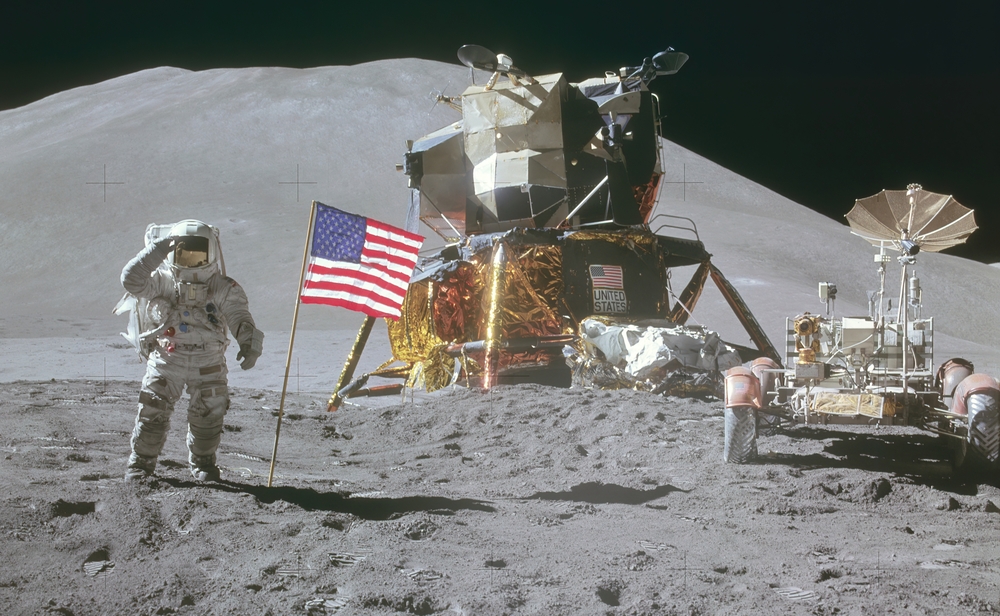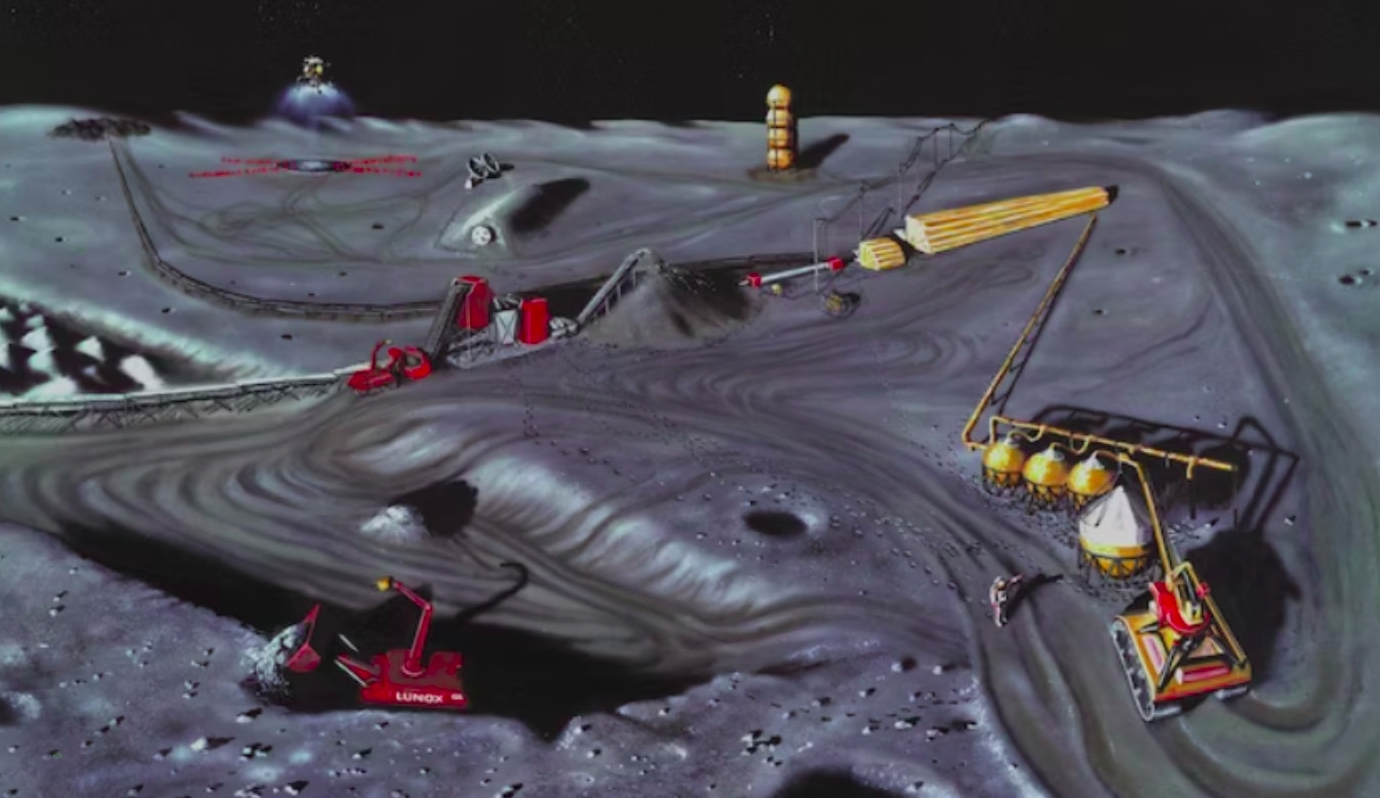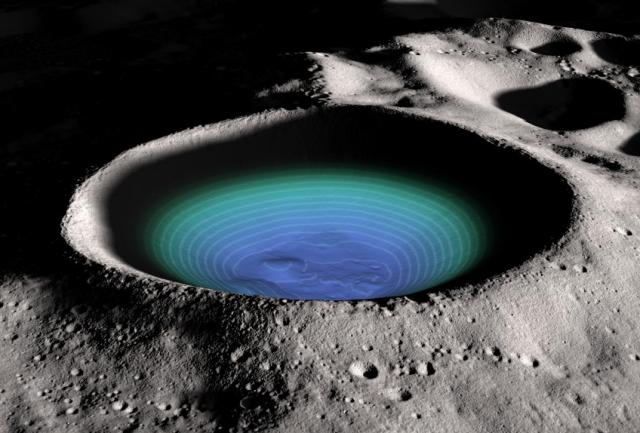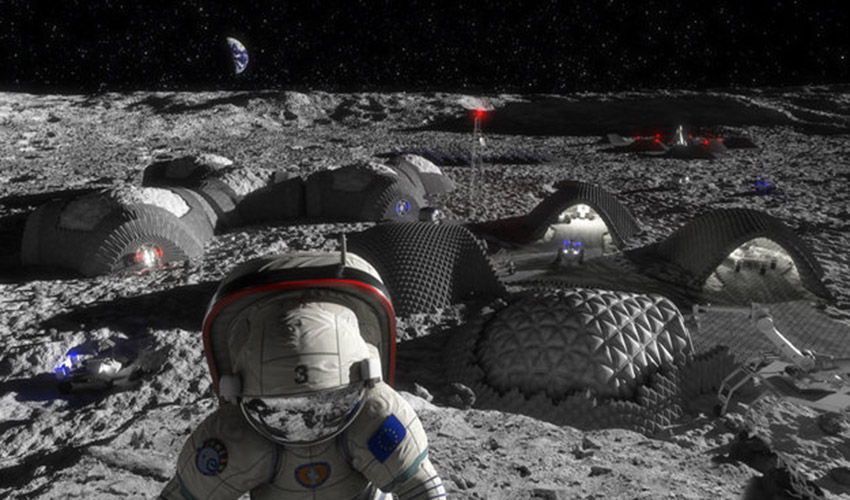
The Only Secure Solution: Space Settlement
Super pathogens would be constrained to Earth’s biosphere, so that space settlement could ensure survival of humankind, as long as the extinction mechanism on Earth is some kind of super pathogen.
What is most important is that a space settlement can survive either human extinction or a collapse of civilization on Earth. It must be self-sufficient.
That means eliminating dependence on Earth for anything, for a space settlement to survive. A space settlement on the Moon’s south pole must use lunar resources for everything, and not need to import anything from Earth.
The cost of importing from Earth is why NASA Artemis and the Chinese are focused on the lunar south pole for human settlement and industry, where we know that large amounts of water and other basic chemicals of life are frozen inside craters and some other locations where there is no sunshine at any time, the so-called “Permanently Shadowed Regions (PSRs)”. We know this in good detail because of lunar orbital probes which have explored the permanently shadowed craters and regions around the lunar south pole.
That decision by NASA Artemis and the Chinese to use lunar resources is based on cost and productivity, not on humanity’s survival. However, NASA Artemis and the Chinese are not planning for the lunar settlements to be 100% self-sufficient, and still plan to import some things from Earth for a long time, because they are not planning for an Earth human extinction event soon.
The possibility of an Earth human extinction event or collapse of civilization is not something that NASA Artemis and the Chinese are even thinking about significantly. They are motivated by only other reasons, which include political, business, and various other self-interests. Who is talking about survival?
Even if humankind is not wiped out completely by a sudden synthetic biology event, it would not take much to cause a collapse of civilization. If the lunar settlement is critically dependent upon Earth exports for survival, then it could die out due to the collapse of civilization, which would end imports from Earth.
If civilization collapses but humankind is not made extinct, then backups and “know how” of the A.I. will probably still exist, so that later, a second major destructive event could occur. You can try to imagine the geopolitics after a civilization collapse, and I don’t think it will be nice, knowing human nature. We might not develop the capability to resume space settlement again for a very long time, if ever. Once we have the technologies to create super pathogens, it is so much quicker and less expensive to create more super pathogens, than to create all the infrastructure to build and operate giant rockets again and deliver supplies and people to the lunar south pole region.
There aren’t many people looking at lunar polar development for the survival of humankind. For this reason, the NASA Artemis and Chinese lunar development programs may fall short of success in making their lunar polar settlements survivable against a collapse of civilization or extinction event on Earth … unless they start to recognize this need for self-sufficiency for survival.
There are many articles in the media discussing why NASA Artemis must stay ahead of the Chinese for “national security” reasons, but who has talked about inter-national security and survival of humankind?
We are all members of the same humankind, just different races. We should stop competing and start cooperating to save humankind and life on Earth.
Lunar Space Settlements
NASA landed men on the Moon six times from 1969 to 1972 during the Apollo program, and then abandoned the program, having beaten the Soviets to the Moon. The whole program was politically motivated for the most part. Started by President John F. Kennedy, it was ended by the Nixon administration.

Apollo 15 in 1971 with Lunar Roving Vehicle. Source: NASA
Things have changed a lot since then, as the US has switched its emphasis from government projects (slow, expensive, and low on incentives to surpass minimal contractual requirements) to supporting private sector competitors (innovative, faster, more cost efficient, and better) for lunar development. Many companies and groups have expressed a serious interest in mining and developing the lunar south pole region, and have ideas for making it profitable and sustainable in the long term. The main issues are the initial startup costs and risks before breakeven and then profits. The government can help initially.
In 2017, during his first year in office, President Trump signed Space Policy Directive 1, changing national space policy to provide a U.S.-led commercial program with international partners for a human return to the Moon, followed by commercial development of lunar resources. Later, this program was named Artemis, after the twin sister of Apollo in Greek mythology.
The Artemis Program would help support private companies in starting up lunar development, with the goal of turning things over to the private sector space economy after the initial startup phase.
The program went international via the Artemis Accords, a collaboration between government space agencies and private companies. There are currently 27 nations which have signed on as of 2023, including the European Space Agency (ESA) and entities from Australia, Bahrain, Brazil, Canada, Colombia, Czech Republic, Ecuador, France, India, Israel, Italy, Japan, Luxembourg, Mexico, New Zealand, Nigeria, Poland, Romania, Rwanda, Saudi Arabia, Singapore, South Korea, Spain, Ukraine, United Arab Emirates, and the United Kingdom.
China was specifically excluded for political reasons, as the US Congress has prohibited collaboration with China. Russia refused to sign, saying the program is too U.S.-centric. Russia has teamed up with China as a competitor to the USA-led group. Only the US, China, and Russia launch humans now.
China and Russia now plan to make their own lunar bases at the lunar south pole, to compete with the Artemis Program and private sector spinoffs. China’s current goal is to send the first humans to the Moon before the year 2030.
Countries without any launch capability are still very important for lunar space settlement. Other countries can make components for mining and manufacturing on the Moon, indoor farming, and any other components required for a community to exist self-sufficiently on the Moon. Needed components are, of course, a very long list. Standards are under development for linking and interchangeability.
Designing, building, and testing components for the Moon is a lot less costly, less risky, and potentially more profitable for small and medium sized companies. They don’t need to build the rockets and landers to delivery them.
There are also already multiple companies developing cargo landers, which are far less difficult and expensive than human landers.
The earlier a company or country starts getting involved, the better.
The USA is providing human launch and landing capability, with two human lunar landers under development by two private space companies, both founded by two of the wealthiest people in the world for the purpose of human settlement of space. When Artemis was created, they were already in good positions to compete: SpaceX, founded by Elon Musk, and Blue Origin, founded by Jeff Bezos. SpaceX is far ahead with its Starship already built and under testing and modifications. People from other countries can buy a ride.
SpaceX has already been launching private astronauts into orbit as well as delivering astronauts to the International Space Station (ISS) by its Dragon human capsule, so that private sector human missions to the Moon are shortly over the horizon. The Starship was designed to send people to Mars, but the Moon is a much less difficult target.
NASA also has its own new rocket, the Space Launch System (SLS), which has its Orion human capsule, but is far more expensive than the SpaceX rockets. However, the US government has already committed to its first Artemis missions using the SLS. SpaceX can provide additional human flights.
The first test of the human launch system, Artemis 1, was in 2022 when the spacecraft was successfully launched with three human-like mannequins, went into lunar orbit, and then returned to Earth, splashing down in the Pacific Ocean. Everything worked very well.
Artemis 2 is scheduled for 2024. It will be manned, but humans will only orbit the Moon, and there will be no lander to land humans onto the Moon’s surface.
Artemis 3 is a planned human landing mission onto the surface of the Moon in the lunar south polar region in 2026.
Multiple companies from various countries have been designing and developing lunar cargo landers, but the USA companies SpaceX and Blue Origin have also been developing human landing systems.
Only the USA, Russia, and China government space programs have landed robotic probes onto the Moon, while two companies from Israel and Japan have attempted but crashed, and the governmental Indian Space Research Organization (ISRO) has also attempted to land but failed. ISRO is attempting another landing in 2023 at the time of this writing (whereby the probe is already in lunar orbit, but I won’t delay this publication by a few days). Some additional companies have designed cargo landers but have not yet launched them (on others’ rockets). China is also developing a human landing system.

(Artwork by NASA.)
The lunar south pole is the target for both the Artemis Program and the Chinese because probes have detected very large quantities of water ice and other volatile elements critical for life support in extremely cold, permanently shadowed craters scattered around the lunar south pole. There are many “permanently shadowed regions (PSRs)” there.
Orbital probes have detected large amounts of water ice in many craters and PSRs around the lunar south pole.
These areas are “cold traps” for volatiles, such as when asteroids and comets have struck the Moon over billions of years creating a temporary thin atmosphere, solar wind hydrogen over the eons which strikes the Moon, and outgassing from the lunar interior.

Credit:
NASA/LRO Probe
These volatile elements can be used for such things as farming, life support, chemical processing in industry, and fuel to launch off the Moon.
Lunar soil is rich in many metals and free iron, as well as glasses and ceramics.
Bulk lunar soil is approximately 40% oxygen by weight, bound to metals and silicon, so there is no shortage of oxygen on the Moon. It is relatively easy to extract from bulk lunar soil.
NASA and others have done extensive work in growing food in closed systems, recycling the water, air, and nutrients. Plants can be grown under artificial light powered by electricity (or sunlight diverted in). Some artwork shows greenhouses under glass, but it is safer to have farms underground with a lot of shielding from radiation and micrometeroids, and thermal stability.
Much of the artwork shows lunar habitats and factories on the familiar surface of the Moon, with layers of bricks or dirt for shielding on top. However, lunar settlements are likely to be dug in as underground, multi-level habitats connected by tunnels and full of plants and lighting, with good thermal insulation from being deeper into the ground. There are many different designs. Additional and improved designs are welcome.

(NASA artwork)
We have all we need on the Moon to live there self-sufficiently. The above can be, and must be, achieved over the next 10-20 years, if we are to have a good chance of having space settlements survive a pathogen or synthetic organism disaster on Earth which could collapse civilization or cause an extinction event.
Emphasis should be made that NASA and other governments do not have the goal of creating self-sufficient space settlements on the Moon soon. That will be entirely up to private sector enterprises. It is the company initiatives which people like you and I can, and must, help make into a reality.
We should not just say “All these things will happen someday ...” and relax into no sense of urgency. We also should not just escape into fantasies of the long term future, which will not happen if we don’t work on the near future.
However, we should try to see how everything comes together into the big picture – artificial intelligence, synthetic biology, space settlement, and current events. The long term future can happen if we focus work on the next steps.
Further out into the future, we can make very large habitats in orbit, rotating to produce artificial gravity (centripetal force). We can build them from asteroids near Earth and/or lunar material launched into space.

(NASA Artwork, text added.)
This would be a nice A.I. zoo to live in.
If you choose to submit feedback, then I wish to thank you in advance. After you click on Submit, the page will jump to the top.
[End of page.]